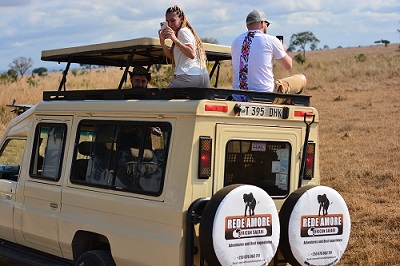
How to Book a Safari in Tanzania 2026–2027: A Complete Step-by-Step Guide
Plan your perfect Tanzania safari in 2026–2027! Discover the best time to visit, top national parks, safari styles, and expert tips for booking with trusted operators.
Customer Reviews
4.9
Step-by-Step Guide to Plan the Perfect Safari Adventure in 2026-2027
When booking your Tanzania safari, there are a few important things to consider to ensure a smooth and enjoyable experience.Booking a safari in Tanzania is one of the most exciting experiences any traveler can have, the country is famous for its beautiful landscapes, incredible wildlife, and friendly people. From watching lions in the Serengeti to standing at the edge of the Ngorongoro Crater, Tanzania offers an adventure that you will never forget.
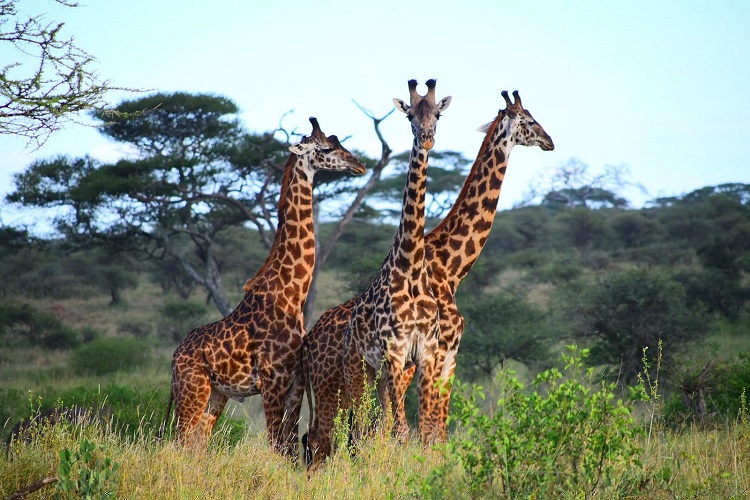
Why Choose Tanzania for a Safari in 2026–2027?
Explore the Best Parks, Wildlife, and Cultural Experiences
Tanzania is one of Africa’s best safari destinations. It is home to world-famous national parks such as Serengeti National Park, Ngorongoro Conservation Area, Tarangire National Park, and Lake Manyara National Park. Each park offers different landscapes, wildlife, and experiences.
The Serengeti is known for the Great Wildebeest Migration, where over two million wildebeest, zebras, and gazelles move across the plains in search of greener pastures. It’s one of the greatest wildlife spectacles on Earth. The Ngorongoro Crater, often called the “Eighth Wonder of the World,” is a natural sanctuary that shelters thousands of animals, including the Big Five- lion, leopard, elephant, rhino, and buffalo.
Beyond wildlife, Tanzania also offers rich cultural experiences with tribes like the Maasai, Hadzabe, and Datoga, who still practice their traditional ways of life. You can also relax after your safari on the stunning beaches of Zanzibar, making Tanzania the perfect mix of adventure, culture, and relaxation.
Step 1: Choose the Best Time to Visit Tanzania
Pick the Perfect Season for Wildlife Viewing
Tanzania is a year-round safari destination, but the best time to go depends on what you want to see.
· June to October (Dry Season): This is the best time for safaris. The weather is clear, and animals gather around rivers and waterholes, making them easy to spot. It’s also the best time to see the Great Migration and the Big Five.
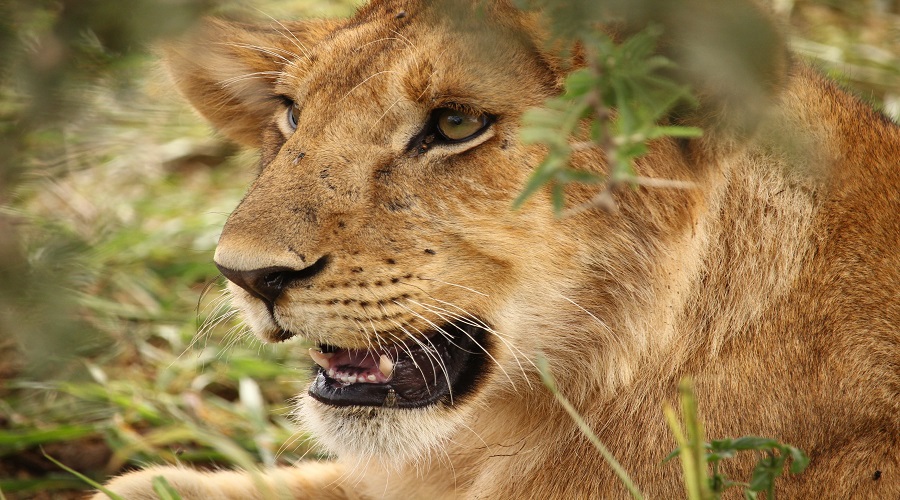
· November to March (Green Season): Short rains make the landscape green and beautiful. It’s quieter, with fewer tourists and lower prices. This is also a great time for birdwatching.
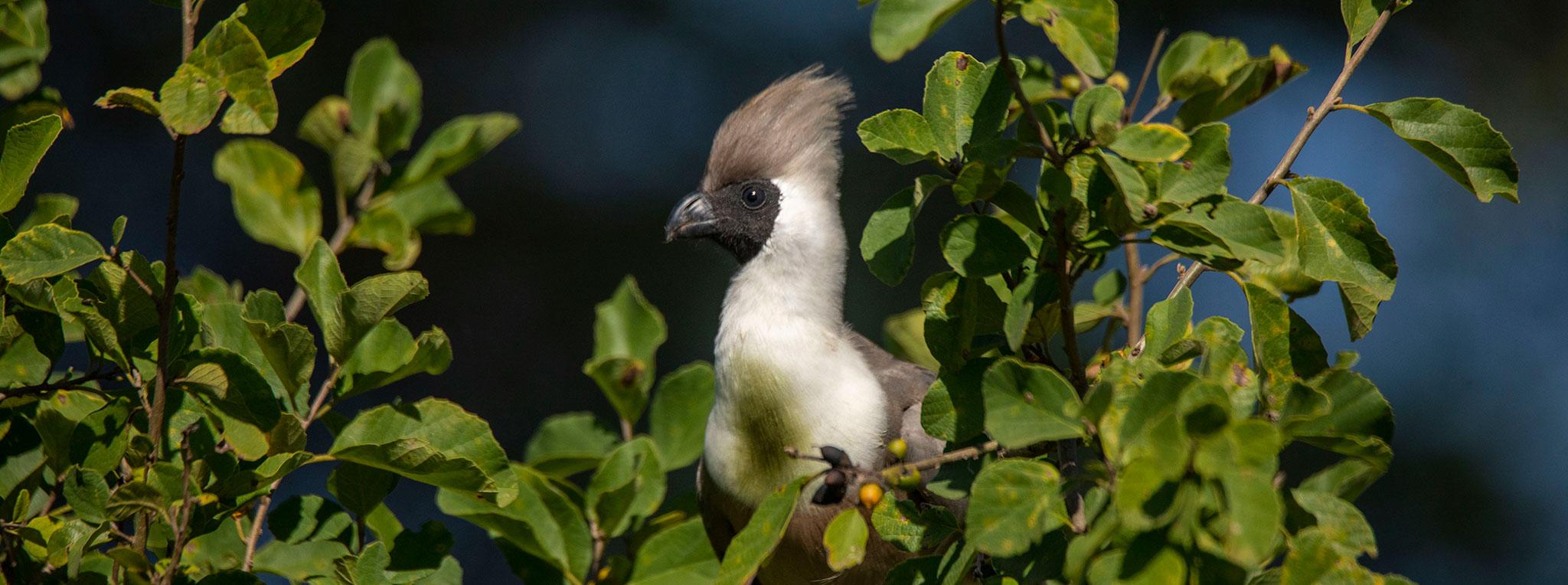
· December to March (Calving Season in Ndutu): Thousands of wildebeest give birth in the southern Serengeti and Ndutu areas. This attracts predators and offers amazing wildlife action.
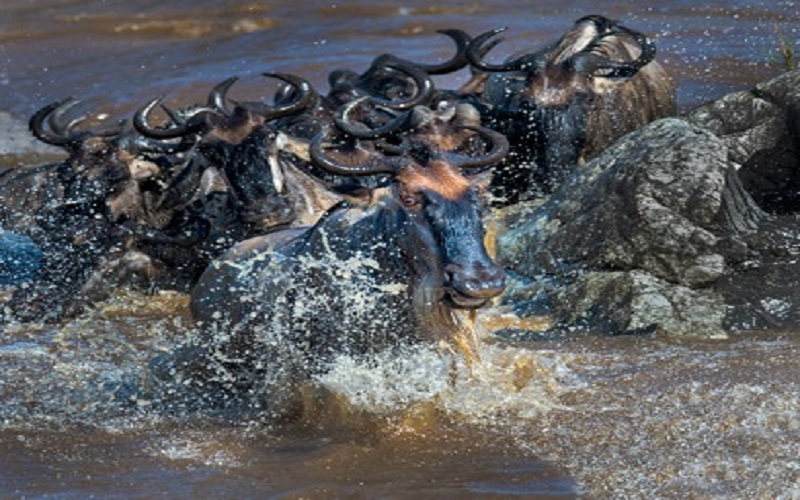
If you plan to visit during the dry season, book your safari early, at least six months in advance as lodges and camps get fully booked.
Step 2: Decide Which National Parks to Visit
Choose the Best Parks for Your Safari Adventure
Tanzania has several safari circuits, each offering something special. Your choice will depend on your travel time, budget, and interests.
The Northern Circuit-The Classic Safari Route for First-Time Visitors
This is the most popular route for first-time visitors and includes Serengeti, Ngorongoro, Tarangire, and Lake Manyara. All these parks are easily reached from Arusha, Tanzania’s safari hub.
· Serengeti National Park: Famous for its endless golden plains and the Great Migration, the Serengeti is the heart of Tanzania’s safari experience. You can see lions, cheetahs, elephants, giraffes, and over 500 bird species. Each part of the park offers something unique, the Central Serengeti (great year-round viewing), Northern Serengeti (river crossings between July and October), and Southern plains (wildebeest calving from December to March).
· Ngorongoro Crater: A UNESCO World Heritage Site, this is the world’s largest inactive volcanic caldera. Its natural enclosure is home to over 25,000 animals, including black rhinos, elephants, zebras, and lions. The scenery from the crater rim is absolutely breathtaking.
· Tarangire National Park: Known for its huge elephant herds and towering baobab trees, Tarangire is peaceful and less crowded. The Tarangire River draws animals during the dry season, offering great game viewing. Birdwatchers will love its 400+ bird species.
· Lake Manyara National Park: A small but beautiful park famous for tree-climbing lions, hippos, flamingos, and lush forests. The park sits below the Great Rift Valley escarpment, offering a perfect start or end to your safari.
The Southern Circuit -Peaceful and Remote Safari Destinations
For travelers who prefer quiet and wild landscapes, the southern parks - Nyerere (Selous) and Ruaha offer untouched beauty and fewer visitors.
· Nyerere National Park (Selous): One of Africa’s largest reserves, known for boat safaris on the Rufiji River, where you can see hippos, crocodiles, and elephants. It’s also great for spotting wild dogs.
· Ruaha National Park: Remote and rugged, Ruaha is Tanzania’s second-largest park and home to large prides of lions, elephants, leopards, and rare antelope. It’s perfect for those seeking a real wilderness adventure.
The Western Circuit -Rare Wildlife and Remote Adventures
The western parks- Katavi and Mahale Mountains offer rare and rewarding experiences for adventurous travelers.
· Katavi National Park: A hidden gem with amazing wildlife and very few visitors. In the dry season, you can see massive herds of buffalo and hundreds of hippos and crocodiles.
· Mahale Mountains National Park: Located on the shores of Lake Tanganyika, this park is best known for chimpanzee trekking and its beautiful combination of beach, forest, and mountain scenery.
Step 3: Choose Your Safari Style and Budget
Pick the Comfort and Adventure Level That Suits You
Tanzania offers safaris for every type of traveler:
· Budget Camping Safari: Perfect for adventurous travelers who want to experience nature up close. You will sleep in tents, eat freshly prepared meals, and enjoy simple but authentic safaris.
· Mid-Range Lodge Safari: The most popular choice for comfort and value. You will stay in cozy lodges or tented camps with private bathrooms and good service.
· Luxury Safari: Ideal for honeymooners or those seeking comfort and privacy. Stay in exclusive lodges or luxury camps, enjoy private game drives, gourmet meals, and excellent service.
Also knowing the costs before booking helps you plan your budget and choose the right safari style. Prices in Tanzania vary depending on the number of days, type of safari, and the parks you visit. Understanding what is included in the cost will help you avoid surprises and get the best experience for your money.
· Budget Camping Safari: Approximately $150–$180 per person per day, sharing tents and vehicles.
· Mid-Range Lodge Safari: Around $350–$400 per person per day, including private lodges, meals, and game drives.
· Luxury Safari: $450–$600 per person per day, with exclusive lodges, private vehicles, and gourmet dining.
These costs usually include park fees, accommodations, meals, and game drives. Exclusions are flights, visas, personal expenses, and tips.
Step 4: Select a Reliable Safari Company
How to Choose the Right Operator for Your Safari
Picking the right safari company makes all the difference. Choose a local operator with experienced guides who know Tanzania’s parks and wildlife well. Check online reviews on Google or TripAdvisor to see what other travelers say. Always ask for a clear quote that includes park fees, accommodation, meals, transport, and taxes. Good communication is also key, your safari planner should answer your questions quickly and clearly.
Step 5: Plan Your Safari Itinerary
Planning your safari can feel tricky because there are so many parks, routes, and activities to choose from. This guide will help you make a clear plan so you can enjoy the best safari experience for your time, budget, and interests.
1. Decide how many days you have for the safari. More days allow visiting more parks and seeing more wildlife.
2. Choose your preferred parks based on wildlife, scenery, and accessibility. Northern Circuit is best for first-timers; Southern and Western Circuits are for remote experiences.
3. Select your safari style and comfort level, from budget camping to luxury lodges.
4. Consider the season, as wildlife patterns change and some areas may be harder to access during rains.
5. Confirm activities and experiences you want, such as walking safaris, cultural visits, or boat safaris.
6. Leave flexibility in your plan to allow unexpected wildlife encounters or scenic stops.
Step 6: Confirm Your Booking and Payment
Secure Your Safari with Confidence
After choosing your safari plan and company, you wll receive a detailed quote. Check carefully what’s included (lodges, meals, park fees, transport) and what’s not (flights, tips, visas, or personal expenses).To confirm, most companies ask for a deposit of 20–40%, which can be paid securely online or via bank transfer. Always request a written confirmation and receipt. Domestic flights within Tanzania like from Arusha to Serengeti or Zanzibar can also be arranged easily by your operator.
Step 7: Prepare for Your Safari
Get Ready for an Amazing Adventure
Before your trip, check visa requirements for your country. Most travelers can apply online or get a visa on arrival. Make sure your passport is valid for at least six months after your travel dates.
Visit your doctor for recommended vaccinations, such as Yellow Fever and Typhoid. Pack light, comfortable clothes in neutral colors, plus sunscreen, insect repellent, a hat, and good shoes. Don’t forget your camera and binoculars to capture every special moment. Your safari operator can help with airport pickup, hotel bookings, and a full packing list.
Step 8: Extend Your Safari to Zanzibar
After your safari adventure, treat yourself to a beach escape in Zanzibar. This tropical island offers crystal-clear waters, soft white sand, and a relaxing atmosphere. Stay at beach resorts in Nungwi, Kendwa, or Paje, go snorkeling or diving at Mnemba Atoll, and explore Stone Town, a UNESCO World Heritage site. Many travelers love combining a 5–7-day safari with a 3–4-day Zanzibar stay, the perfect mix of adventure and relaxation.
Final Tips for Booking a Safari in Tanzania in 2026–2027
Always book with a licensed and experienced tour operator to ensure safety and reliability. Compare a few quotes but focus on quality and reputation, not just price. Make sure park fees and taxes are included in your quote.
If you’re a solo traveler or on a budget, ask about group or joining safaris, these are affordable and social options. Confirm your airport transfers and accommodations before and after your safari to avoid last-minute problems. Finally, stay flexible, wildlife sightings depend on nature, not a schedule. The unexpected moments are often the most magical!
Ready to Book Your Safari in Tanzania in 2026–2027?
Booking a safari in Tanzania doesn’t have to be stressful. With the right information and a trusted local operator, you can enjoy one of the most unforgettable travel experiences in the world. From witnessing the Great Migration to relaxing on the beaches of Zanzibar, Tanzania has it all.
For a smooth, personalized, and memorable experience, contact Rede Tours andSafaris, a reliable Tanzanian company that specializes in tailor-made safaris, cultural tours, and beach holidays.
Frequently Asked Questions (FAQs) About Booking a Safari in Tanzania 2026–2027
1. What is the best time to go on a safari in Tanzania?
The dry season from June to October is the best for wildlife spotting and the Great Migration. The green season (November to March) is quieter, with lush landscapes and excellent birdwatching. The calving season in December–March offers dramatic wildlife action in the southern Serengeti.
2. Which national parks should I visit on my first safari?
For first-time visitors, the Northern Circuit is highly recommended. It includes Serengeti, Ngorongoro Crater, Tarangire, and Lake Manyara. Southern and Western Circuits like Ruaha, Nyerere, Katavi, and Mahale Mountains are better for travelers seeking remote and quiet experiences.
3. How long should my safari be?
It depends on your interests:
· 3 days: Short getaway to Tarangire and Ngorongoro.
· 5 days: Classic northern circuit including Serengeti.
· 7 days: Add Lake Manyara or extra time in Serengeti.
· 10+ days: Combine safari with a Zanzibar beach holiday.
4. What types of safari styles are available?
· Budget Camping Safari: Tents, shared vehicles, affordable and adventurous.
· Mid-Range Lodge Safari: Comfortable lodges or tented camps, private bathrooms, semi-private vehicles.
· Luxury Safari: Exclusive lodges, private game drives, gourmet meals, ideal for honeymoons or special occasions.
5. How much does a safari in Tanzania cost?
Costs vary:
· Budget: $150–$180 per person per day
· Mid-Range: $350–$400 per person per day
· Luxury: $450–$600+ per person per day
Prices usually include park fees, accommodations, meals, and game drives. Exclusions: flights, visas, personal expenses, and tips.
6. Can I go on a safari as a solo traveler?
Yes! Solo travelers can join group safaris, which are more affordable and social, while still providing full safari experiences.
7. Do I need a visa to visit Tanzania?
Most travelers can apply for a Tanzania tourist visa online or obtain one on arrival. Make sure your passport is valid for at least six months from your travel date.
8. What should I pack for a safari?
Bring light, neutral-colored clothing, comfortable shoes, hat, sunscreen, insect repellent, camera, and binoculars. Your safari operator can provide a detailed packing list.
9. Can I combine a safari with a beach holiday?
Absolutely! Many travelers combine a 5–7-day safari with a 3–4 day stay in Zanzibar, enjoying both wildlife adventures and tropical beaches.
10. How do I choose a reliable safari company?
Pick a licensed, experienced operator with local guides, good reviews, clear pricing, and excellent communication. Operators like Rede Tours and Safaris offer personalized, safe, and seamless experiences.